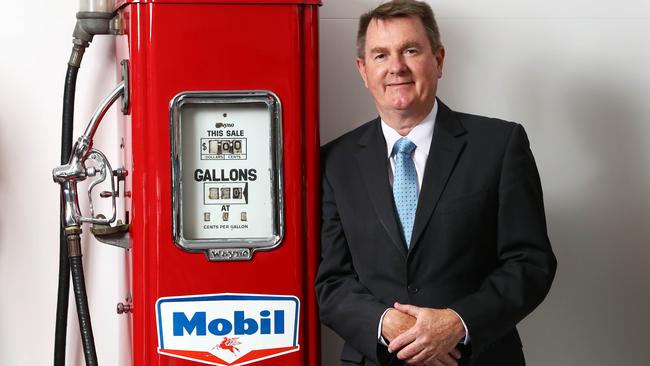Strait-talking Exxon boss in chase for Bass gas
The world’s biggest oil company has a small problem.

The world’s biggest oil company has a small problem.
Fifty years after discovering its first offshore well in Victoria’s Bass Strait, the gas fields owned by ExxonMobil and BHP are running out faster than expected.
For gas users on Australia’s east coast — reliant on the Gippsland Basin joint venture for 40 per cent of their needs — the decline of the strait’s biggest fields is leading to concern amid predictions of a supply shortfall in the next few years.
Adding to the tension, one of the most anticipated searches for a giant gas field in decades — Exxon’s Dory prospect in Bass Strait — came up dry in November, dashing hopes of a source of new gas for tight domestic markets.
Exxon’s Australian boss is clearly under pressure to land a big find after coming up empty-handed from that pricey $120 million drilling program.
“We are disappointed with the results. Clearly we didn’t find the gas reserves that we were looking for,” Exxon Australia chairman Richard Owen told The Weekend Australian in an interview to mark the 50th anniversary of its Bass Strait venture with BHP.
“It’s a good reminder to us all, including the community, that drilling exploration wells is a risky business that requires quite a lot of money. But we’re hopeful we will continue to be able to explore and that we will find some sizeable gas reserves that will help Bass Strait continue to be an important part of the energy mix for decades to come.”
Despite the miss on the Dory prospect, Owen remains a pragmatist.
At its peak in the late 1970s the joint Exxon-BHP venture provided 14 per cent of total government tax revenue and accounted for more than half of all the nation’s crude oil production.
Exxon now produces just one-10th of the volume of oil it was pumping when Owen joined the company in 1983, while its big legacy gas fields — Marlin, Barracouta and Snapper — are also on their last legs.
Yet he’s hedging the company’s bets by studying plans for an LNG import terminal in Victoria, recognising the tight market on his doorstep.
Exxon revealed in late 2017 that production from the Bass Strait fields, which are eastern Australia’s biggest domestic gas source, would drop by nearly a third last year, returning to pre-2015 production levels.
It’s since recovered those volumes, but fears of a Victorian gas shortage persist, prompting Exxon to consider the import terminal plan.
“In the near-term I think the answer to this problem is that we need to find new sources of gas,” Owen says. “That obviously includes more exploration in the Bass Strait but another part of that puzzle could be importing LNG into the marketplace. It could be an important part of the solution.”
Macquarie analysts estimated a Longford LNG import plant would cost $100m — compared to announced costs of $250m from AGL and $200m to $300m from Andrew Forrest’s Australian Industrial Energy — and operating costs up to 25 per cent cheaper than its rival plants, meaning it could supply gas for up to 31c less per gigajoule.
Exxon has started conducting initial engineering and design studies and started scoping potential suppliers — including gas from its own global portfolio — to a plant which could receive its first imports by 2022. A final investment decision could be struck in the next 12-18 months. “We’re obviously a significant part of the LNG business worldwide and it’s an important part of Exxon’s global business,” Owen says.
“We obviously have access to plenty of LNG.”
While it had been assumed Exxon would take advantage of existing gas infrastructure at the Longford gas plant, Owen said it was considering the Western Port area near Hastings, where it operates the Long Island Point plant.
Another option is to tie in an import plant to the existing Bass Strait infrastructure, potentially marking a neat reworking of the existing kit already in place.
The lack of a new Bass Strait discovery means the southeast of Australia is likely to be more reliant on importing gas through pipelines from Queensland or from the LNG import terminals that four proponents including Exxon are studying.
LNG imports are making economic sense because east coast gas prices are exposed to international pricing after $70 billion of LNG export plants at Gladstone were built to export more gas than their proponents could develop themselves.
As a result of this and the decline of the east coast’s more cheaply produced gas, traditional prices of $3 to $4 have risen to between $8 and $10, with predictions of more price rises as international LNG markets tighten.
Owen is watching the market closely and considering his options. “There are no overnight successes — these projects take five to seven years to bring to the market. But I’m quite hopeful we are going to find more gas in the Bass Strait.”




To join the conversation, please log in. Don't have an account? Register
Join the conversation, you are commenting as Logout